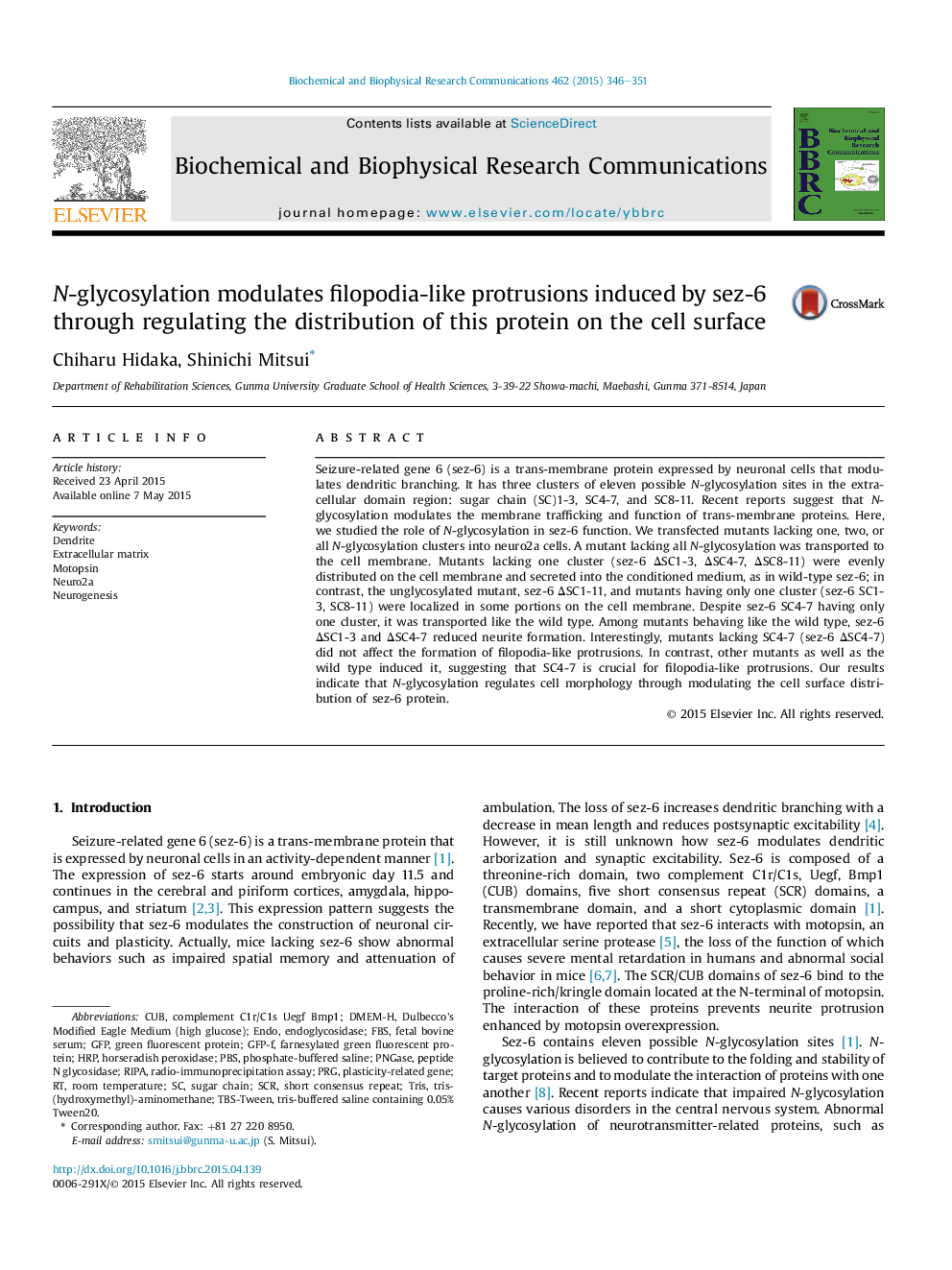| Article ID | Journal | Published Year | Pages | File Type |
|---|---|---|---|---|
| 10751836 | Biochemical and Biophysical Research Communications | 2015 | 6 Pages |
Abstract
Seizure-related gene 6 (sez-6) is a trans-membrane protein expressed by neuronal cells that modulates dendritic branching. It has three clusters of eleven possible N-glycosylation sites in the extracellular domain region: sugar chain (SC)1-3, SC4-7, and SC8-11. Recent reports suggest that N-glycosylation modulates the membrane trafficking and function of trans-membrane proteins. Here, we studied the role of N-glycosylation in sez-6 function. We transfected mutants lacking one, two, or all N-glycosylation clusters into neuro2a cells. A mutant lacking all N-glycosylation was transported to the cell membrane. Mutants lacking one cluster (sez-6 ÎSC1-3, ÎSC4-7, ÎSC8-11) were evenly distributed on the cell membrane and secreted into the conditioned medium, as in wild-type sez-6; in contrast, the unglycosylated mutant, sez-6 ÎSC1-11, and mutants having only one cluster (sez-6 SC1-3, SC8-11) were localized in some portions on the cell membrane. Despite sez-6 SC4-7 having only one cluster, it was transported like the wild type. Among mutants behaving like the wild type, sez-6 ÎSC1-3 and ÎSC4-7 reduced neurite formation. Interestingly, mutants lacking SC4-7 (sez-6 ÎSC4-7) did not affect the formation of filopodia-like protrusions. In contrast, other mutants as well as the wild type induced it, suggesting that SC4-7 is crucial for filopodia-like protrusions. Our results indicate that N-glycosylation regulates cell morphology through modulating the cell surface distribution of sez-6 protein.
Keywords
RIPATBS-tweenPNGasePrGTRISNeuro2aHRPGFPPBSFBStris-(hydroxymethyl)-aminomethaneradio-immunoprecipitation assayendoEndoglycosidaseCubshort consensus repeatRoom temperatureDendriteSugar chainfetal bovine serumExtracellular matrixPhosphate-buffered salineNeurogenesisHorseradish peroxidasegreen fluorescent proteinSCR
Related Topics
Life Sciences
Biochemistry, Genetics and Molecular Biology
Biochemistry
Authors
Chiharu Hidaka, Shinichi Mitsui,
